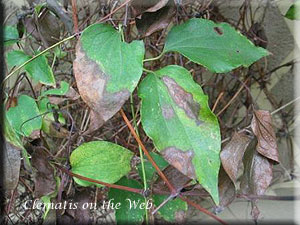Chinese Lantern Physalis Alkekengi: A Guide to Growing and Caring for the Plant
Chinese lantern physalis alkekengi, also known as the bladder cherry or winter cherry, is a perennial plant that is native to Asia and Europe. It is a member of the nightshade family, which also includes tomatoes and peppers. The plant produces bright orange-red lantern-shaped fruit that encloses a small, edible berry.
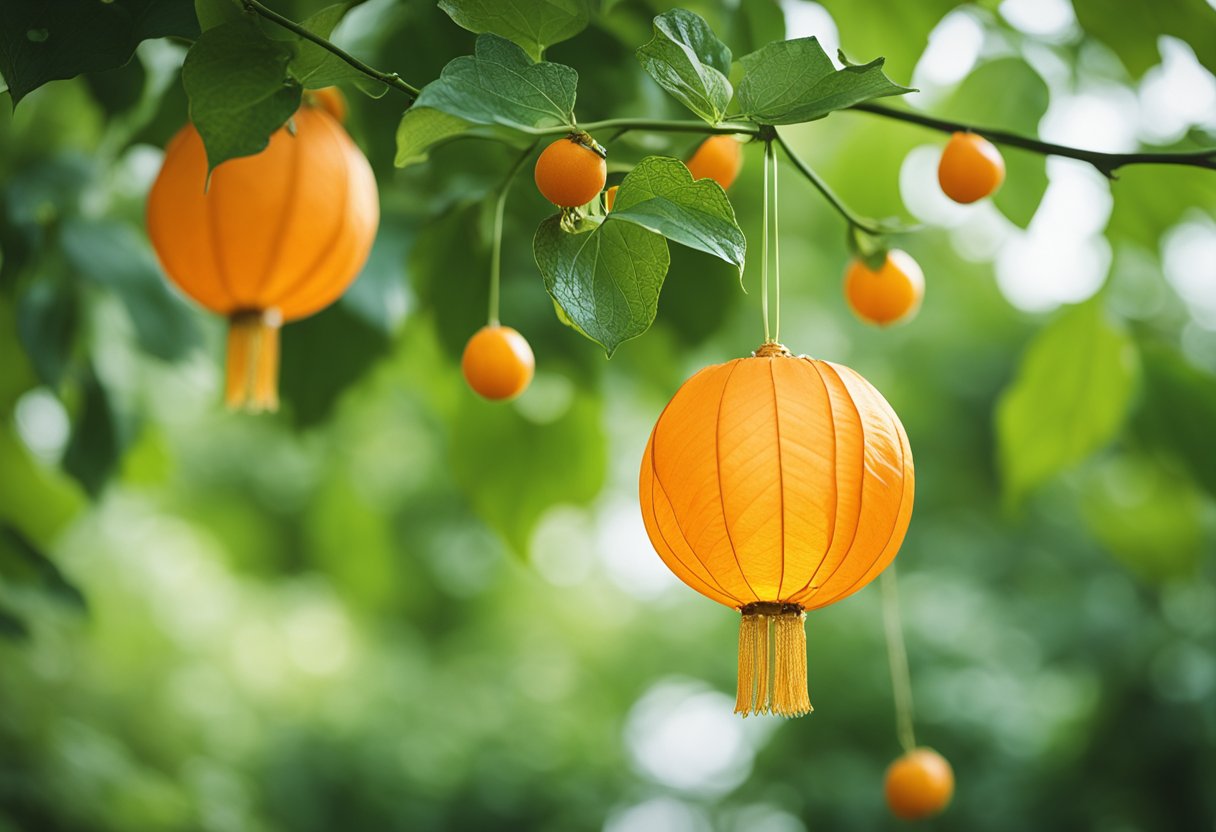
Chinese lantern physalis alkekengi is a popular ornamental plant that is often grown for its striking fruit, which can be used for decorative purposes in flower arrangements and crafts. It is also used in traditional Chinese medicine to treat a variety of ailments, including sore throat, cough, and fever. The plant is easy to grow and requires minimal care, making it a popular choice for gardeners of all skill levels.
Overall, Chinese lantern physalis alkekengi is a fascinating plant that has both ornamental and medicinal uses. Its unique fruit and easy-to-grow nature make it a popular choice for home gardeners and florists alike.
Botanical Overview
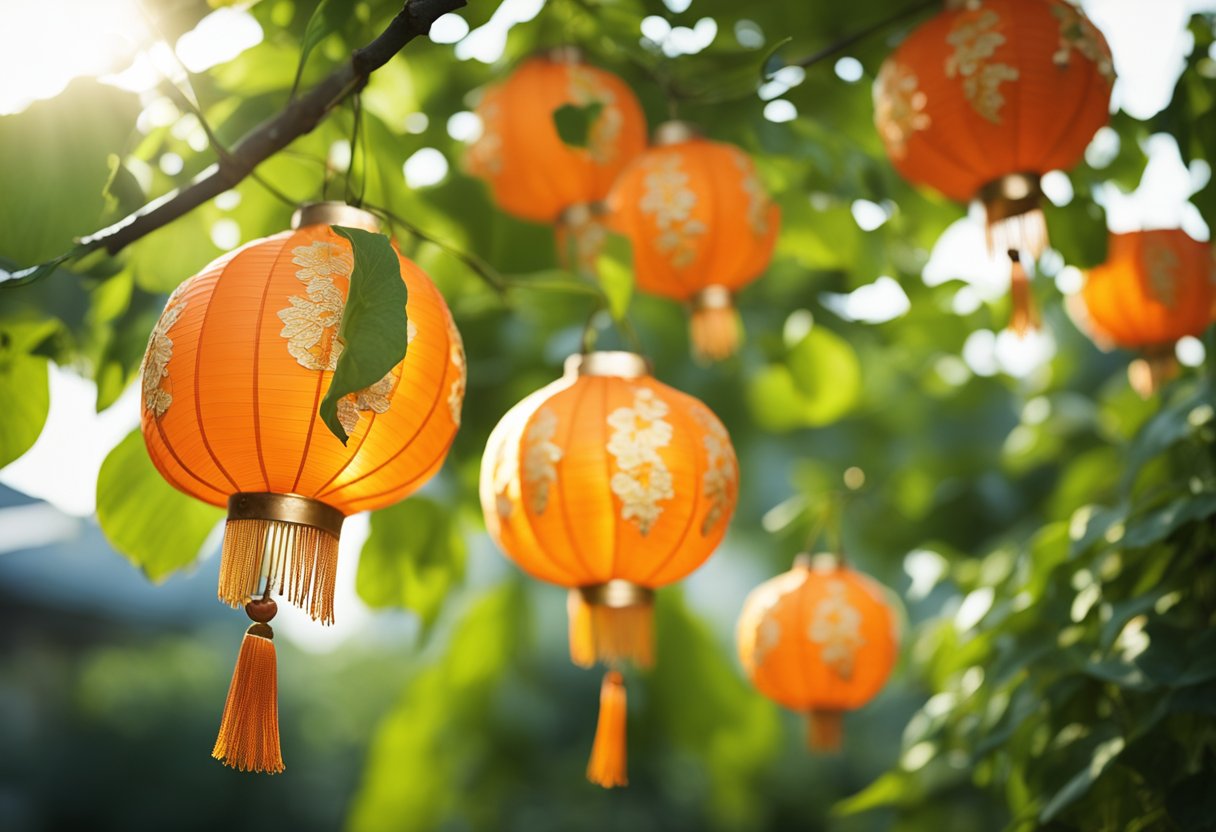
Scientific Classification
The Chinese lantern, also known as Physalis alkekengi, belongs to the nightshade family, Solanaceae. It is a herbaceous perennial plant that grows up to 60 cm tall and spreads up to 90 cm wide. The plant has medium green leaves that are ovate and toothed, and tiny white flowers that bloom in mid-summer. The flowers are followed by orange-red calyxes that resemble paper lanterns, hence the common name.
Physical Characteristics
The Chinese lantern has a unique appearance that sets it apart from other plants. The plant produces bright orange-red calyxes that are papery and inflated, resembling a lantern. The calyxes enclose a small, edible fruit called the bladder cherry. The fruit is round and yellowish-green when it is immature, turning bright red when it is ripe. The plant prefers well-drained soil and full sun to partial shade.
In summary, the Chinese lantern plant is a herbaceous perennial that belongs to the nightshade family, Solanaceae. It has medium green leaves, tiny white flowers, and produces orange-red papery calyxes that resemble lanterns. The plant is commonly grown for its unique appearance and ornamental value.
Cultivation
Planting Guidelines
Chinese lantern physalis alkekengi can be grown in various settings, including gardens, pots, or directly in the ground. When planting, it is important to ensure that the soil is well-drained and that the plant receives adequate sunlight. Planting should be done in the spring or fall, with a spacing of 12-18 inches between each plant.
Soil Requirements
Chinese lantern physalis alkekengi grows best in well-drained soil with a pH range of 6.0-7.5. The soil should be rich in organic matter and should not be too compact. It is recommended to add compost or other organic matter to the soil to improve its quality.
Light and Temperature
Chinese lantern physalis alkekengi requires full sun to grow and thrive. It can tolerate some shade, but too much shade can result in stunted growth and reduced fruit production. The plant can grow in a wide range of temperatures, but it prefers temperatures between 60-75°F.
In conclusion, Chinese lantern physalis alkekengi is a versatile plant that can be grown in various settings. By following the planting guidelines, ensuring proper soil requirements, and providing adequate light and temperature, growers can expect a healthy and fruitful plant.
Care and Maintenance
Watering and Fertilization
Chinese Lantern Physalis Alkekengi plants require regular watering to maintain healthy growth. It is recommended to water the plants deeply once a week, especially during hot and dry weather. When watering, make sure to avoid getting the leaves wet to prevent fungal diseases. The plant also requires regular fertilization to promote healthy growth and flowering. It is recommended to use a balanced fertilizer once a month during the growing season.
Pruning and Mulching
Pruning is an important part of maintaining Chinese Lantern Physalis Alkekengi plants. It is recommended to prune the plants in early spring to remove any dead or damaged branches and to shape the plant. Mulching is also important to retain moisture in the soil and to suppress weed growth. It is recommended to apply a layer of mulch around the base of the plant in the spring.
Pest and Disease Management
Chinese Lantern Physalis Alkekengi plants are generally resistant to pests and diseases. However, they can still be affected by slugs, flea beetles, and other common garden pests. To prevent pest infestations, it is recommended to regularly inspect the plants and remove any affected leaves or branches. Neem oil can also be used to control pests. Chinese Lantern Physalis Alkekengi plants can also be affected by bacterial and fungal diseases. To prevent disease, it is recommended to avoid overhead watering and to water the plants at the base. If the plant is affected by disease, it is recommended to remove any affected leaves or branches and to treat the plant with a fungicide. Snails can also be a problem, and it is recommended to use slug bait to control them.
Propagation

Chinese Lantern Physalis Alkekengi can be propagated by seed or division. Both methods are relatively easy and can be done in the spring or fall.
Seed Propagation
Seeds can be collected from mature fruits in the fall and stored in a cool, dry place until spring. In the spring, the seeds can be sown directly into the soil or started indoors.
To start seeds indoors, fill a seed tray with a good quality seed-starting mix and sprinkle the seeds on top. Cover lightly with soil and keep moist. Germination usually takes between 14-21 days. Once the seedlings have grown to a height of 2-3 inches, they can be transplanted into individual pots or planted directly into the garden.
Division
Chinese Lantern Physalis Alkekengi can also be propagated by division. This method is best done in the spring when new growth is just starting to emerge.
To divide a mature plant, carefully dig it up and gently separate the root ball into smaller sections. Each section should have at least one healthy stem and root system. Replant the sections in their new location, making sure to water thoroughly.
Overall, Chinese Lantern Physalis Alkekengi is a relatively easy plant to propagate and is a great addition to any garden. Whether you choose to propagate by seed or division, with a little patience and care, you can enjoy these beautiful annuals year after year.
Harvesting and Usage
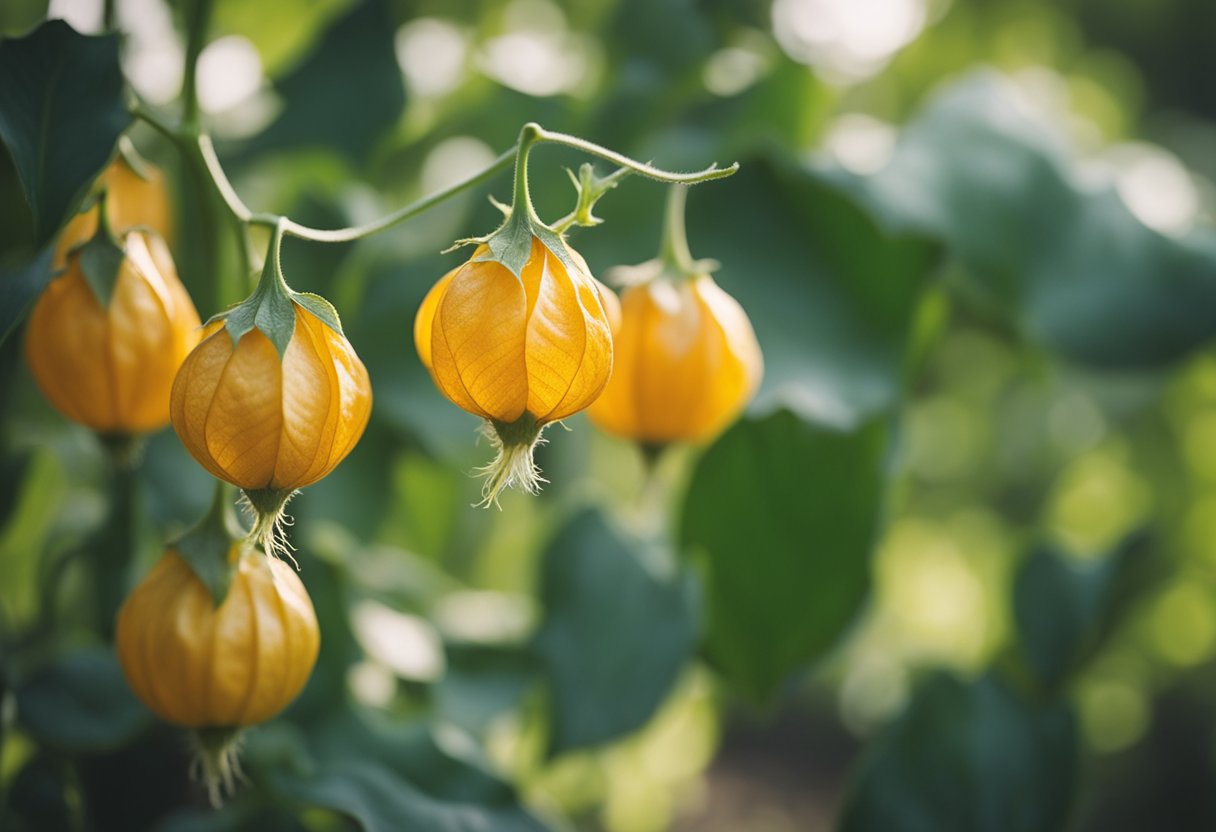
Harvesting Techniques
Chinese Lantern Physalis Alkekengi is a popular plant that is grown for its decorative purposes as well as its medicinal properties. The plant is harvested during the fall season when the leaves have started to turn yellow and the fruit has ripened. The fruit is harvested by cutting the stem off at the base and then removing the outer husk to reveal the bright orange fruit inside. The fruit can then be used for ornamental purposes or for medicinal applications.
Ornamental Uses
The Chinese Lantern Physalis Alkekengi is a beautiful plant that is often used for decorative purposes. The dried flower arrangements of the plant are popular for their unique and striking appearance. The plant’s bright orange fruit is often used in dried arrangements and can be mixed with other dried flowers to create stunning displays. The plant is also used in fresh flower arrangements and can be combined with other flowers to create beautiful bouquets.
Medicinal Applications
The Chinese Lantern Physalis Alkekengi is a medicinal plant that has been used for centuries in Traditional Chinese Medicine. The plant is believed to have anti-inflammatory, anti-viral, and anti-cancer properties. The fruit of the plant is often used to treat respiratory infections, sore throat, and fever. The plant is also used to treat skin conditions such as eczema and psoriasis.
In conclusion, the Chinese Lantern Physalis Alkekengi is a versatile plant that can be used for both ornamental and medicinal purposes. Its unique appearance and medicinal properties make it a popular choice among gardeners and herbalists alike. Proper harvesting techniques are essential to ensure the plant’s fruit is of the highest quality. Whether used for dried flower arrangements or in Traditional Chinese Medicine, the Chinese Lantern Physalis Alkekengi is a valuable addition to any garden or herbal collection.
Potential Challenges
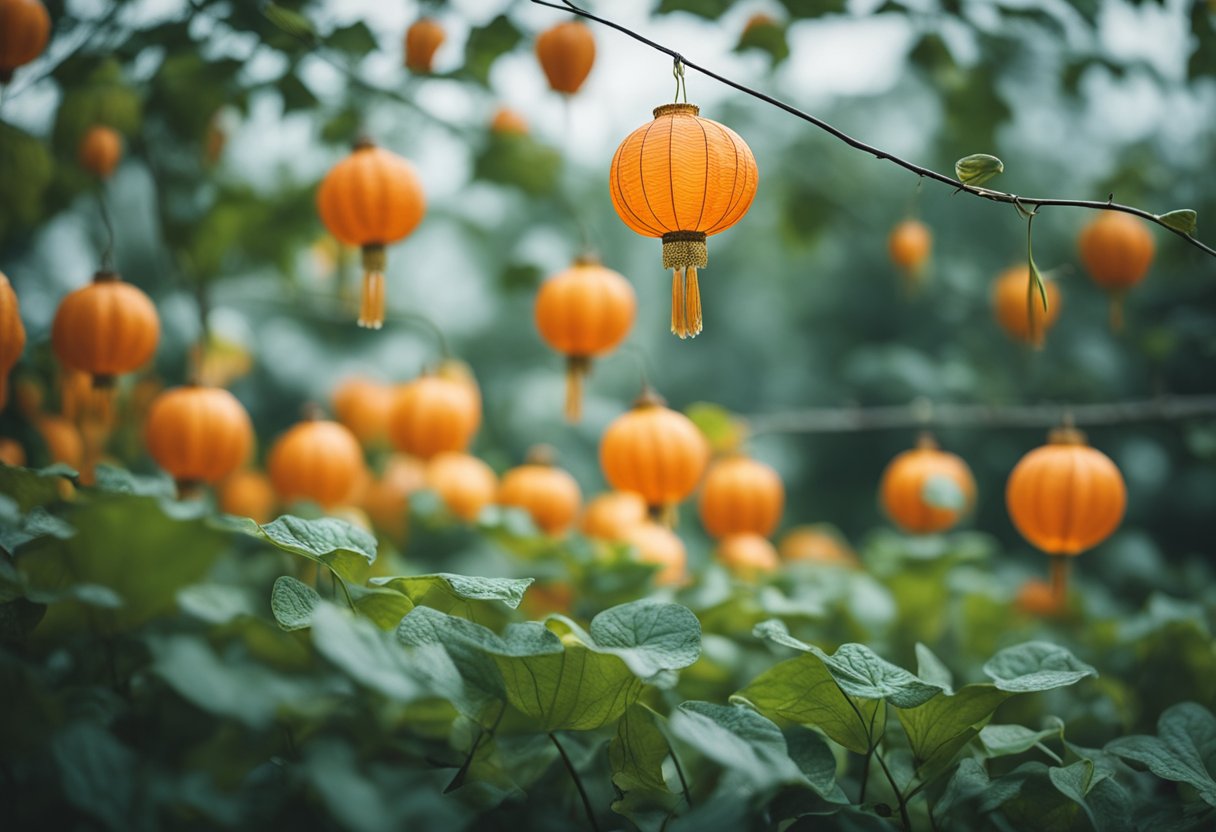
Invasiveness
Chinese lantern physalis alkekengi has the potential to become invasive in certain regions. This plant can spread quickly and easily, and its seeds can remain viable for several years. Once established, it can be difficult to remove, and it may outcompete native plant species for resources. Gardeners and landscapers should be aware of the potential invasiveness of this plant and take precautions to prevent it from spreading beyond its intended location.
Toxicity Concerns
Chinese lantern physalis alkekengi contains toxic compounds in its foliage and calyx. While the plant is not highly toxic, it can cause problems if ingested in large quantities. Symptoms of poisoning may include nausea, vomiting, and diarrhea. Ingestion of the plant’s calyx can also cause irritation to the skin and mucous membranes. Gardeners and landscapers should take care when handling this plant and keep it away from children and pets.
Environmental Impact
Chinese lantern physalis alkekengi can have a negative impact on the environment if it becomes invasive. It may outcompete native plant species and reduce biodiversity. Additionally, the plant is susceptible to frost damage, which can further impact local ecosystems. Gardeners and landscapers should consider the potential environmental impact of this plant before introducing it to a new area.
In summary, while Chinese lantern physalis alkekengi can be a beautiful addition to a garden or landscape, it is important to be aware of its potential challenges. The plant’s invasiveness, toxicity concerns, and environmental impact should be carefully considered before introducing it to a new area.
Historical and Cultural Significance

Historical Use
The Chinese lantern physalis alkekengi has a long history of medicinal use in Europe and Asia. Dioscorides, a Greek physician and botanist, mentioned the plant’s medicinal properties in his book “De Materia Medica” in the 1st century AD. The plant was used to treat various ailments such as inflammation, fever, and digestive disorders.
Cultural Symbolism
The Chinese lantern physalis alkekengi is commonly known as the ground cherry or strawberry tomato. In Japan, it is called the “hōzuki” and is used in traditional festivals and ceremonies. The plant’s distinctive lantern-shaped fruit is considered a symbol of good luck and prosperity. It is often used as a decoration during the Tanabata festival, a celebration of the meeting of the deities Orihime and Hikoboshi.
In Europe, the plant is commonly known as the Chinese lantern due to its papery, lantern-shaped calyx. It has been used as a decorative plant for centuries and is often dried and used in floral arrangements. The plant’s bright orange fruit and unique shape make it a popular addition to fall and winter decorations.
Overall, the Chinese lantern physalis alkekengi has a rich history and cultural significance in both Europe and Asia. Its medicinal properties and distinctive appearance have made it a valuable plant in traditional medicine and decorative arts.
Frequently Asked Questions

What are the different varieties of Chinese lantern plants available?
There are several varieties of Chinese lantern plants available, including Physalis alkekengi var. franchetii, which has larger and more vibrant lanterns than the standard Physalis alkekengi. There is also a variegated form, Physalis alkekengi var. alkekengi ‘Variegata’, which has white-edged leaves and pinkish-orange lanterns.
Are the fruits of the Chinese lantern plant edible, and if so, how are they used?
Yes, the fruits of the Chinese lantern plant are edible, but they are not commonly consumed due to their bitter taste. They are sometimes used in traditional medicine to treat various ailments.
What are the common issues associated with growing Chinese lantern plants?
Chinese lantern plants are generally hardy and disease-resistant, but they can be susceptible to root rot if they are overwatered or planted in poorly-draining soil. They can also be invasive if not properly managed.
How can the invasive nature of Chinese lantern plants be managed in a garden setting?
To manage the invasive nature of Chinese lantern plants, it is recommended to plant them in a contained area, such as a raised bed or container. Deadheading the lanterns before they drop their seeds can also help prevent the plant from spreading.
What are the ideal growing conditions for Chinese lantern plants?
Chinese lantern plants prefer full sun to partial shade and well-drained soil. They can tolerate a range of soil types, but prefer a slightly acidic soil pH. They are also drought-tolerant once established.
Where can one purchase Chinese lantern plants for gardening purposes?
Chinese lantern plants can be purchased at most garden centers and nurseries, as well as online retailers. It is important to purchase plants from a reputable source to ensure they are not invasive or diseased.


